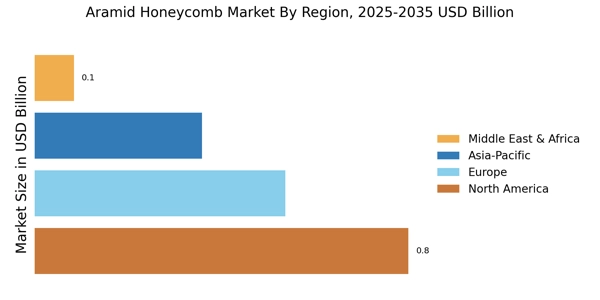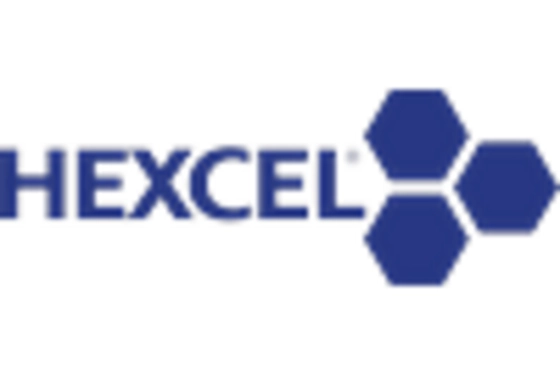Growth in Automotive Applications
The automotive industry is increasingly incorporating advanced materials to improve vehicle performance and safety. The Aramid Honeycomb Market is benefiting from this trend, as aramid honeycomb structures are employed in various automotive applications, including crash structures and lightweight panels. The Aramid Honeycomb Market is anticipated to grow at a rate of around 3% annually, with a significant shift towards electric vehicles, which require lightweight materials to enhance battery efficiency. This shift indicates a potential surge in demand for aramid honeycomb products, as manufacturers strive to meet regulatory standards and consumer expectations for fuel efficiency and safety. Consequently, the Aramid Honeycomb Market is poised for growth as it caters to the evolving needs of the automotive sector.
Rising Demand in Aerospace Sector
The aerospace sector is experiencing a notable increase in demand for lightweight and high-strength materials, which positions the Aramid Honeycomb Market favorably. Aramid honeycomb structures are utilized in aircraft components due to their excellent strength-to-weight ratio and thermal stability. As airlines and manufacturers seek to enhance fuel efficiency and reduce emissions, the adoption of aramid honeycomb materials is likely to rise. Reports indicate that the aerospace industry is projected to grow at a compound annual growth rate of approximately 4.5% over the next five years, further driving the need for innovative materials like aramid honeycomb. This trend suggests a robust future for the Aramid Honeycomb Market as it aligns with the industry's sustainability goals.
Increased Focus on Renewable Energy
The renewable energy sector is witnessing a surge in investments, particularly in wind and solar energy. The Aramid Honeycomb Market is likely to benefit from this trend, as aramid honeycomb materials are utilized in the construction of lightweight and durable components for wind turbine blades and solar panel structures. The Aramid Honeycomb Market is projected to expand at a compound annual growth rate of approximately 8% over the next decade, driven by the need for sustainable energy solutions. This growth suggests a rising demand for aramid honeycomb products, which can enhance the efficiency and longevity of renewable energy systems. As the world shifts towards greener energy sources, the Aramid Honeycomb Market is expected to play a crucial role in supporting these initiatives.
Advancements in Manufacturing Technologies
Recent advancements in manufacturing technologies are transforming the production processes within the Aramid Honeycomb Market. Innovations such as automated production lines and advanced composite manufacturing techniques are enhancing the efficiency and quality of aramid honeycomb products. These technologies enable manufacturers to produce complex geometries and customized solutions that meet specific industry requirements. As production costs decrease and quality improves, the market is likely to see an increase in adoption across various sectors, including aerospace, automotive, and construction. The integration of these technologies suggests a promising future for the Aramid Honeycomb Market, as it adapts to the evolving demands of its customers.
Regulatory Support for Lightweight Materials
Regulatory bodies are increasingly promoting the use of lightweight materials to enhance energy efficiency and reduce environmental impact. The Aramid Honeycomb Market stands to gain from these initiatives, as aramid honeycomb structures are recognized for their potential to lower weight without compromising strength. Various regulations aimed at reducing carbon emissions in transportation and construction sectors are likely to drive the adoption of aramid honeycomb materials. As industries strive to comply with these regulations, the demand for innovative solutions like aramid honeycomb is expected to rise. This regulatory support indicates a favorable environment for the Aramid Honeycomb Market, potentially leading to increased market penetration and growth.


















Leave a Comment